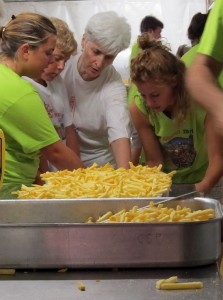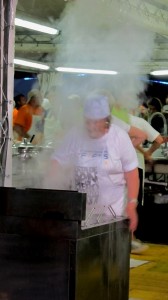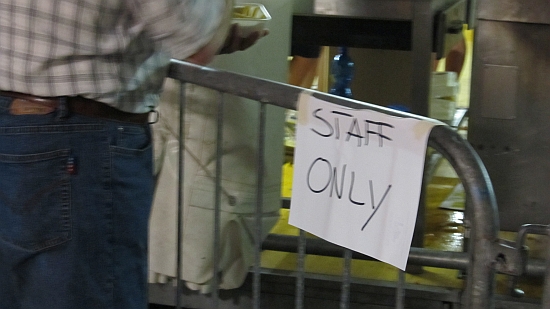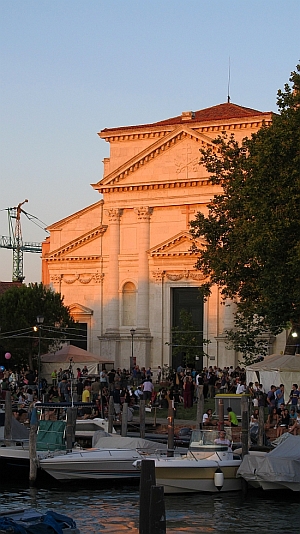
The dust has now settled on the festa of San Piero de Casteo and everyone is recovering (or not) from the toil, excitement, racket, and nearly suffocating odors of frying fish and charring ribs.
Fine as all this may be, it used to be, in many ways, even better. Lino Penzo, president of the Remiera Casteo (our very local rowing club), was born in the next campo over, an open space named Campo Ruga. And he remembers it the old way.
“There wasn’t anything here,” he said, looking at the stretch of grass in front of the church. The party was in Campo Ruga where, to hear him tell it, as many people lived as in Albuquerque, New Mexico. Families everywhere. Kids everywhere. Drama without any pause for station identification. “We used to put cushions on the windowsill,” Lino said, “and just watch what was going on outside. It was like the theatre, it never stopped.”
There was the day a certain man went across to the osteria to drink some wine. Evidently his wife expressed the opinion that he was doing this far too often, so he locked her in the house and went anyway. So she fixed up a bedsheet and let herself down through the window. I don’t know if she chased him around the campo brandishing a rolling pin, but I can imagine it.
And there was a woman whose nerves would give out whenever there was a fight in the family (evidently she preferred the “flight” option of the famous pair of possibilities), and she’d suddenly go into a swoon. Everybody knew this, so when anybody heard the sound of nearby strife the men in the cafe would put out a chair for her. They knew she’d be needing it to fall onto, sooner or later, so they got ready.
And there were shops everywhere. The series of doors we see today, many of them shut forever, belonged to a collection of every enterprise necessary for human life. Two (two!) bakeries, fruit and vegetable vendors, a butcher, a cheese and milk shop, a cobbler, probably also an undertaker, though he didn’t mention it. I don’t remember the rest, but they were all there. You didn’t have to go more than 20 steps from home to buy everything you needed. As in most Venetian neighborhoods, going to San Marco was unknown, mainly because it was pointless. This was the world.
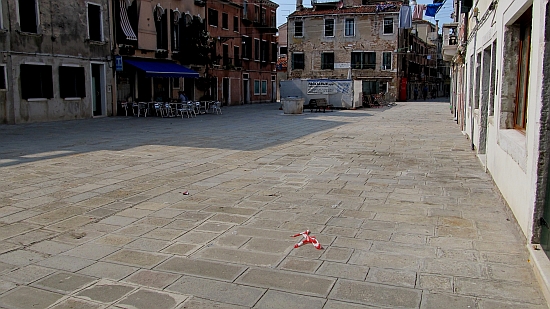
As for the festa, it was celebrated in the campo, and involved mostly eating. Long tables were set up, where everyone sat and ate tons — “tons” — of bovoleti, and sarde in saor, and other traditional Venetian food.
Eventually one day somebody suggested moving over to the big empty grassy area in front of the church, and put up a little stand with some food. From there, the festa just got bigger and bigger, and ultimately never went back to Campo Ruga.
So now we have live music and big balloons and grilled animals and gondola rides, and a big mass with the patriarch, and even a cake competition. It’s like the county fair, without quilts.
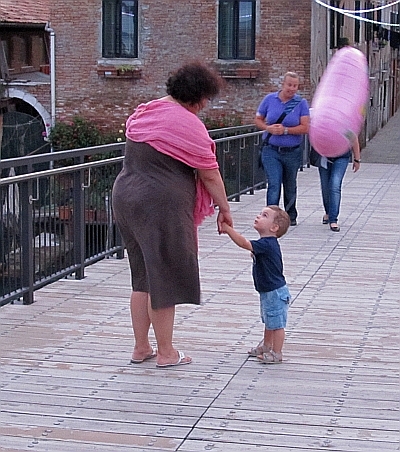
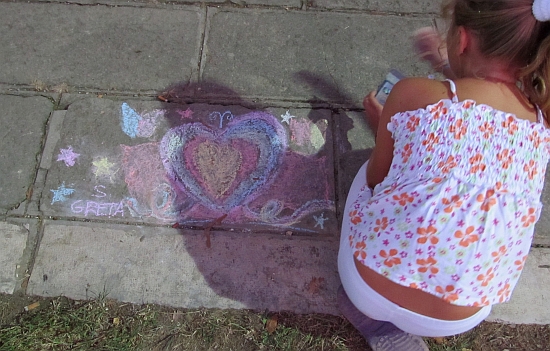
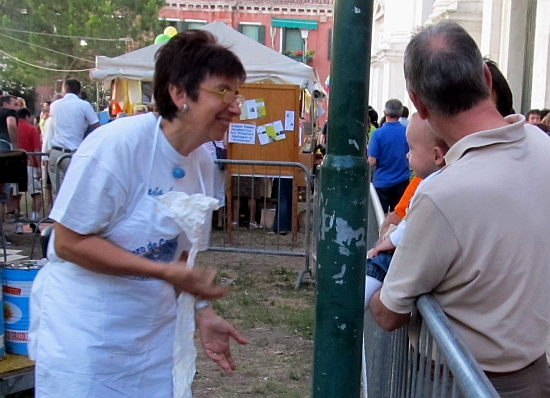
One man was producing these tumuli of french fries, but it took four people to study the numbered bits of paper to figure out which desperate customer got the next boxful. This lone woman stood over vats of boiling spaghetti like the Delphic oracle, and after five nights of this she could probably have made a few prophecies herself. The last ray of light in a dying universe will be the gleam of the cell phone of a teenage girl.

